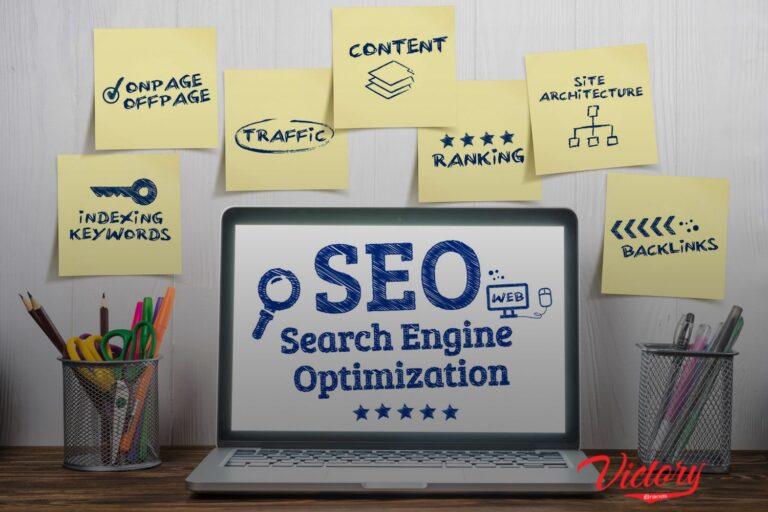Optimizing Website Design for Faster Load Times and Better Performance

Optimizing Website Design for Faster Load Times and Better Performance

In the rapid-paced digital era, users demand websites that load swiftly and operate effortlessly. Websites that load slowly irritate users and harm their search engine rankings. This blog post will explore actionable strategies for optimizing your website design to improve load times and overall performance.
Why Website Speed and Performance Matter
Fast website speed and optimal performance are essential for delivering a great user experience (UX) and boosting search engine optimization (SEO). Studies show that users tend to abandon a site if it takes longer than three seconds to load. Google prioritizes page speed as a key ranking factor, so websites with slower load times may find it challenging to rank well on search engine results pages (SERPs).
Optimized website performance benefits:
- Enhanced user satisfaction
- Increased engagement and conversions
- Higher search engine rankings
Key Factors Affecting Website Load Times
Various aspects of website design can significantly impact how quickly a site loads. Addressing these factors will help your site run more efficiently:
1. Hosting Environment
Choosing a dependable hosting provider is key to maintaining quick load times and ensuring your site stays accessible. Upgrading to a dedicated server or integrating a content delivery network (CDN) can significantly enhance performance.
2. Image Optimization
Large images can slow down a website significantly. Use tools like TinyPNG or ImageOptim to compress file sizes without sacrificing quality.
3. Code Efficiency
Bloated code increases load time. Optimize your code by minifying CSS, JavaScript, and HTML, eliminating unnecessary spaces and characters.
4. Browser Caching
Enable caching to store static files locally on users’ devices, reducing the time needed for subsequent visits.
5. Third-Party Scripts
Excessive scripts, such as tracking codes or widgets, can drag down performance. Regularly audit and remove unnecessary scripts.
Best Practices for Website Design Optimization
Use a Lightweight Theme
Choose themes designed for speed. Avoid those loaded with unnecessary features you won’t use. Lightweight themes like GeneratePress or Astra are excellent options.
Prioritize Mobile Optimization
With mobile traffic surpassing desktop, ensuring mobile responsiveness is critical. Use responsive designs and test with tools like Google’s Mobile-Friendly Test.
Optimize Typography and Fonts
Use system fonts or web-safe fonts to reduce font loading time. To prevent delays, limit the number of custom fonts and load them asynchronously.
Limit HTTP Requests
Each image, script, or stylesheet generates an HTTP request, which can affect load times. Minimizing these requests can lead to noticeable improvements in load speed. Consolidate files and use sprites for images where possible.
Advanced Strategies for Better Performance
Implement Lazy Loading
Lazy loading ensures that images and videos load only when they appear in the user’s viewport, conserving bandwidth and improving initial load times.
Use a Content Delivery Network (CDN)
A content delivery network (CDN) directs visitors to the closest server, minimizing latency and accelerating load times.
Leverage Browser Prefetching
Browser prefetching anticipates user actions by preloading certain elements before they’re needed. This technique can significantly enhance perceived performance.
Audit Plugins and Tools
Too many plugins can bog down your site. Regularly audit your plugin usage and deactivate or remove unnecessary ones. Choose lightweight plugins that serve multiple purposes.
Monitoring and Maintaining Website Performance
After optimizing your website, ongoing monitoring is essential to maintain its performance. Platforms like Google PageSpeed Insights, GTmetrix, and Pingdom are excellent for pinpointing performance issues and suggesting improvements.
Regularly update your CMS, plugins, and themes to ensure compatibility with the latest web standards. Conduct performance audits monthly or after significant updates to ensure your website remains in top shape.
Conclusion
Optimizing your website’s design for faster load times and better performance is an ongoing process that requires attention to detail and regular updates. By following the strategies outlined above, you can enhance user experience, improve search engine rankings, and achieve your digital goals.
Remember, a faster website not only keeps visitors engaged but also sets the stage for long-term success.
Frequently Asked Questions
Tools like Google PageSpeed Insights, GTmetrix, and Pingdom are great for identifying performance bottlenecks.
Large, uncompressed images increase load times. Optimizing images through compression tools can significantly improve performance.
Lazy loading defers the loading of images and videos until they are visible to the user, reducing bandwidth usage and enhancing initial load speed.
Yes, CDNs can benefit any website by reducing latency, especially for global audiences. They are particularly effective for content-heavy sites.
It’s best to conduct audits monthly or after implementing significant updates to ensure optimal performance.
Share:
Categories
- Brand Strategy
- Business Growth
- Business Strategy
- Content Marketing
- Custom Software Development
- Customer Relationship Management
- Digital Advertising
- Digital Marketing for Startups
- Digital Marketing Strategy
- E-Commerce
- Email Marketing
- Future Marketing
- Influencer Marketing
- Lead Generation
- Mobile Optimization
- Pay Per Click (PPC)
- SEO
- Social Media Marketing
- Social Media Marketing
- Social Media Trends
- Software Development
- Startup Strategies
- Technology
- User Experience (UX)
- Venture Development
- Video Marketing
- Web Design
- Website Design
- Website Optimization
Latest Post
- SEO Best Practices for Modern Website DesignIn the competitive digital landscape, a well-designed website is not just about…
- Why Storytelling is Crucial for Effective Brand StrategyIn a world inundated with advertisements and messages, cutting through the noise…
- How to Conduct a Competitive Analysis for Brand Strategy SuccessIn today’s crowded marketplace, distinguishing your brand is essential for success. One…
Other Blogs




